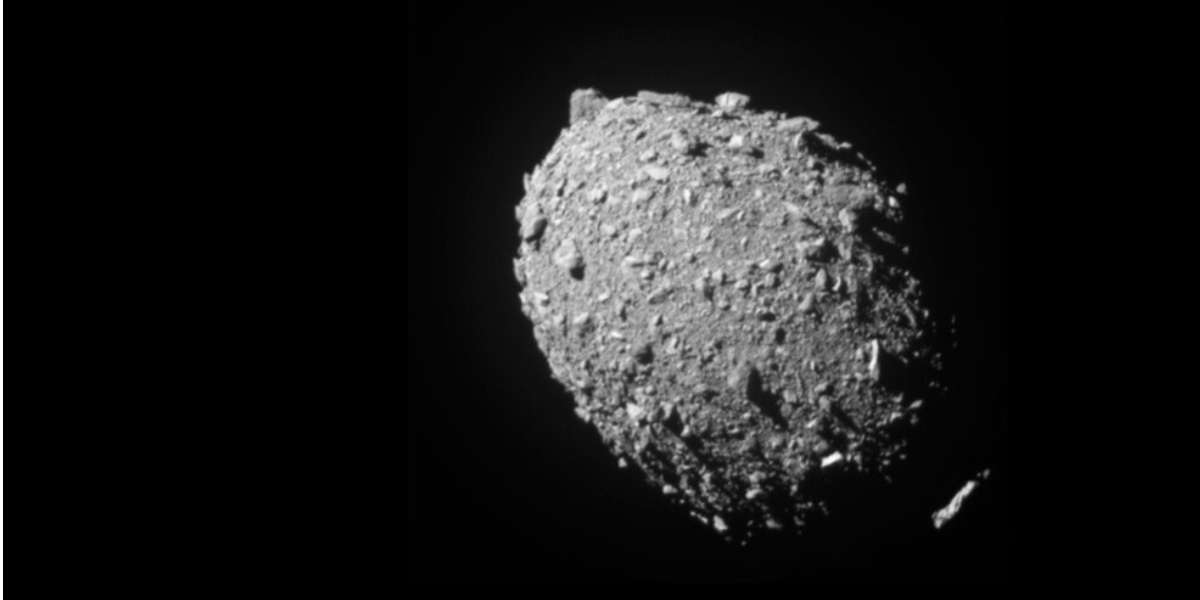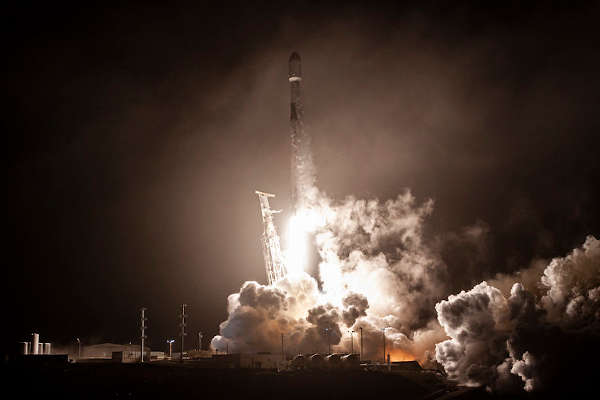In the picture
Image of the asteroid Dimorphos eleven seconds before the impact of the DART probe on September 27, 2022 [NASA].
NASA's mission statement DART (test for Double Asteroid Redirection) achieved its goal on September 26th after deflecting the orbit of the asteroid Dimorphos, through the impact of an unmanned spacecraft with kinetic energy. It is the first mission statement oriented development of planetary defense systems and represents a breakthrough for the future defense of the Earth from external threats.
DART clearly demonstrates that the technology is ready to develop more advanced asteroid operations systems. The European Space Agency's subsequent mission statement HERA will undoubtedly take this a step further. It will use two miniaturized satellites (Milani and Juventas) to evaluate the results of the impact in detail, studying for the first time the interior of an asteroid by radar, accumulating valuable experience in ultra-gravity leave and intersatellite link operations in deep space. It is planned fill in this study by 2026, by which time NASA expects to have a sufficiently developed and repeatable deflection technique for use in future asteroid-to-Earth collision hazards.
A precedent for the exploitation of space resources
The combined results of HERA and DART will provide valuable information for the development of technologies capable of landing on and extracting resources from asteroids and other celestial bodies such as the Moon. The lunar degree program took off in the middle of the last century, when the Outer Space Treaty was drafted to regulate the use and activities of space exploration, and the United States and the USSR competed to reach the Earth's satellite first. Unfortunately, this interest waned as the confrontation between the United States and the Soviet Union came to an end. The budget invested in research and development space was drastically reduced, reaching really low levels in 2021, with only 0.32% of the expense of the U.S. government dedicated to NASA (in 1966 it was 4.41%).
However, the growing commercial interest of private companies such as SpaceX or Blue Origin seems to have revived the space degree program , with an eye on a future economic return, from entrance in activities such as space tourism, satellite positioning or communication systems networks, but also in the longer term deadline in the field of mining. The high concentration of mineral resources on asteroids, on the Moon or on Mars can certainly open up an opportunity for enormous profits, although this will require significant investments.
For example, the high presence of Helium-3 on the Moon, confirmed by the Apollo missions, could be harnessed as clean nuclear energy source , normally obtained radioactively. The business Rolls Royce would be working on a nuclear reactor that in addition to serving as rocket propulsion would provide energy for drilling, processing and storage in lunar mining tasks.
The mission statement Osirix-Rex, also from NASA and launched in 2016, will return to Earth in 2023 with study samples of the asteroid Bennu. This is the third mission statement of the 'New Frontiers' program, aimed at the exploration and research of several planets of the solar system such as Jupiter, Venus or the dwarf planet Pluto. Undoubtedly, a greater knowledge of our system, including the direct study of their surfaces and how they were formed, will be a step core topic towards a greater understanding of space resources. These missions will have to go hand in hand with the research of new ways to land and work on asteroids, something that is not possible today. In any case, the long term lunar base deadline of the Artemis program will make it possible to study the surface of the Moon directly and permanently, collecting data highly valuable for mineral extraction and the creation of technologies capable of carrying out these activities.
Problems and challenges
The great potential benefits of space mining come with challenges of the same magnitude. The high cost of investing in all these missions would be increased even more if we were to add the fuel and machinery needed to transport the extracted material back to Earth. Some experts point out that one way to overcome this drawback would be to use most of the resources directly at the extraction site as energy source and as material for the manufacture of Structures necessary for the colonization of space. Thus, the water obtained from the Moon could be used to generate oxygen for astronauts, or for the creation of fuel for spacecraft, saving costs.
The outlook is attractive for private companies, but profits are still a long way off (in the case of Space X Boeing, there has been some profitability thanks to contracts with NASA). For example, one of the companies that attracted media attention for its purpose of creating fuel stations in Earth's orbit using water from the Moon's poles, the American ShackeltonEnergyCompany, did not manage to raise the necessary investment to continue its activity. However, the involvement of private initiative has opened up a new horizon, making it possible to afford costs that until a few years ago were only possible for large states. This is a 'new space age'.
The emergence of the 'New Space' phenomenon as a new space-oriented private business sector opens up endless possibilities for cost reduction and expansion of Humanity's domain. The companies of Elon Musk, Jeff Bezos and Richard Branson, among others, have their sights set on these aspects. Blue Origin's New Glenn rocket or the movement of the Hubble telescope to a more stable orbit (a partnership of NASA and SpaceX) are clear examples of the ambition and decision of these companies to expand our frontiers. Certainly the average of one rocket launch per week from Musk's business this year is nothing like decades past. Challenges such as the creation of rockets capable of carrying extremely heavy payloads, including the machinery needed to extract minerals on celestial bodies, as well as the tons of resources and fuel required for their transport, are trying to be overcome by new technologies. Among them we find NASA's Space Launch System or SpaceX's Falcon Heavy, which made a successful launch of two U.S. Space Force satellites into orbit at mission statement in November. The novelty of the Falcon Heavy is, in addition to the ability to land two rockets simultaneously (inherited from a previous mission statement), the enormous power it achieves, representing a further step in the strength and efficiency of transporting heavy loads and the use of reusable rockets.
It should be emphasized that, in some respects, the problem today is not primarily a lack of technical expertise, but rather an insufficient budget for development. Here precisely lies the position core topic of private companies, which are managing to reduce costs enormously, and which are working together with national agencies to facilitate the process. In this way, companies such as Elon Musk's would already have the technological capacity and financing to carry out these advances. His interest in establishing a colony on Mars by 2050 is undoubtedly an ambitious project , which for now is at a very distant point, with long-term goals deadline.


